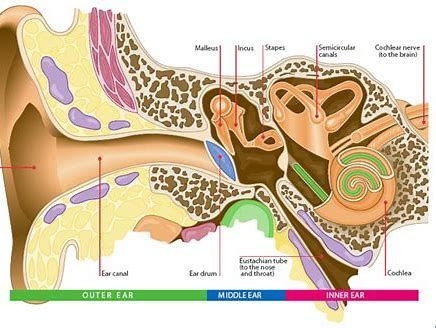How do we hear

Ear and Hearing - The ear is divided into 3 parts - outer ear, middle ear and inner ear
Hearing depends on a series of steps as the sound travels from outer ear to inner ear and to the brain.
Outer ear
- Sound waves enter the outer ear and travel through the ear canal, which leads to the eardrum.
Middle ear
- The vibration of the eardrum is passed on to three tiny bones in the middle ear. These bones are called the malleus, incus, and stapes.
- The bones in the middle ear amplify the sound vibrations and send them to the cochlea in the inner ear.
Inner ear
- The cochlear is a snail-shaped structure filled with fluid, in the inner ear and contains delicate key hearing structures.
- Once the vibrations cause the fluid inside the cochlea to ripple, a traveling wave forms along the basilar membrane in the cochlea.
- Hair cells—sensory cells sitting on top of the basilar membrane—ride the wave. Hair cells near the wide end of the snail-shaped cochlea detect higher pitched sounds, such as an infant crying. Those closer to the center detect lower-pitched sounds, such as a large dog barking.
- As the hair cells move up and down, microscopic hair-like projections (known as stereocilia) that are located on top of the hair cells bump against an overlying structure and bend. Bending causes pore-like channels, which are at the tips of the stereocilia, to open up. When that happens, chemicals rush into the cells, creating an electrical signal.
- The auditory nerve carries this electrical signal to the brain, which turns it into a sound that we recognize and understand
